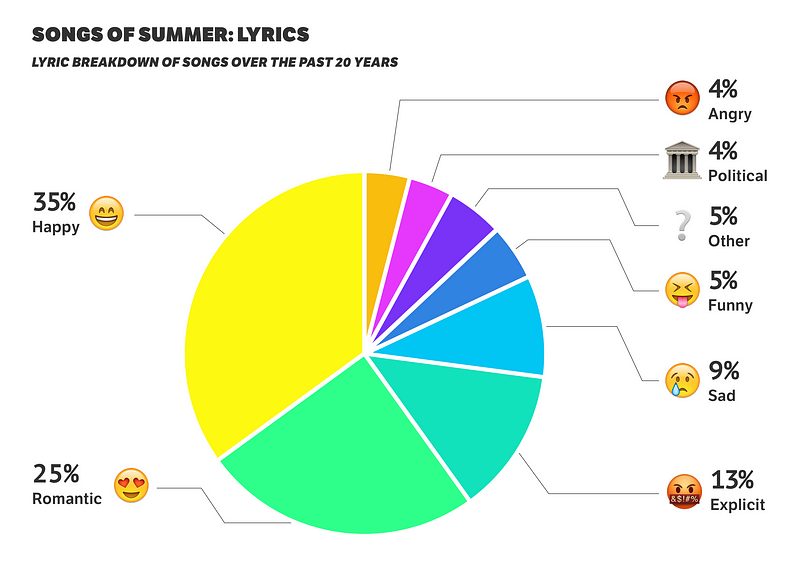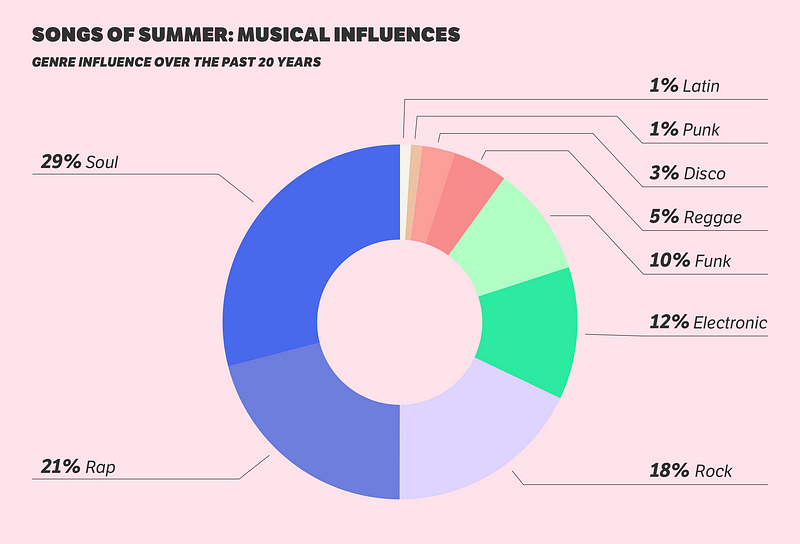Although the music industry may seem tumultuous and ever changing, the Song of the Summer remains a consistent annual event. Here we look at what components allow these giants of industry to emerge above their peers and dominate the summer charts.
_________________________
Guest post by Emily Blake of Next Big Sound
Despite the fact that the music industry is in constant flux as streaming transforms the way we consume music, one thing has been constant: Year after year, August after August, one song stands loudly above the rest as the Song of Summer. OK, every year except 2015, when Omi’s “Cheerleader” won by default during a summer devoid of a “Call Me Maybe” or a “Fancy.”
But usually, there is one sticky pop monster that owns the summer, dominates the charts and becomes such an earworm that you hate when you find yourself singing along to it in September. What separates these behemoths from the mere mortals?
A song’s release date and marketing has a lot to do with it. But there are plenty of songs that are released by the right artists at the right time, but fail to achieve Song of Summer status. (Sorry, “Lollipop.”) It begs the question, what are the bare necessities on a sonic level? What are the musical ingredients that any song needs to reach the levels of “Blurred Lines”?
In order to get an answer, we’ve culled through data from Pandora’s Music Genome Project, which assigns 450 musical attributes to each and every song on Pandora. We looked at the most common and strongest properties from this list of the most successful summer songs based on their performance on the Billboard charts, limiting the list to the #1 songs from the past 20 years. Looking through these common traits, it seems there’s no one recipe for the song of the summer, but there are some ingredients that leaving them is sort of like baking brownies and forgetting the eggs. (Because I’ve done that before and it was a disaaaassster.)
Lighthearted Lyrics
In terms of lyrics, the past 20 songs of the summer, the vast majority have been happy and/or romantic in tone. The cheeriest? The Black Eyed Peas’ “I Gotta Feeling,” which spent 14 weeks straight at #100 on the Hot 100. The gushiest? “Crazy In Love,” which marked Beyoncé’s first time topping the Hot 100 as a solo artist. And if you can manage to find the perfect mixture of both, you might strike gold — like “Call Me Maybe,” which spent nine back-to-back weeks on top of the chart and launched Carly Rae Jepsen from an unknown to a pop legend.

In general, Songs of Summer tend to steer clear of politics, because politics, in case you haven’t been paying attention over the past eight months, can be a total bummer. Lyrics are also generally not too explicit, “Hot In Herre” being a very sexy exception and “Fancy” being an expletive-filled anomaly. Apart from those two, most of the Songs of Summer have been pretty PG — that is, as long as you don’t read between the “Blurred Lines.”
The “Campfire Element”
Most of the Songs of Summer we analyzed have a very strong rhythm, a dominant melody and a prominent riff. What’s it sound like? It all adds up to what Pandora Music Analyst Michelle Alexander calls the “campfire feel.”
“The ‘campfire effect’ is the often entire compositional dominance of many or all very hooky musical elements,” she explained. “These are the kinds of songs that everyone can sing along to.”
Take another listen to LMFAO’s “Party Rock Anthem” to get an example of a summer with a strong riff. And for a huge, juicy chorus, bump “Hot In Herre,” the perfect campfire singalong assuming that campfire is of the Wet Hot American Summer variety.
A Little Bit Of Soul, And A Lot Of Dance
Any song of the summer is likely going to be a “pop song,” but pop music is typically, as Alexander puts it “a smoothie of everything going on around it,” with one song having elements of a variety of genres. But there are some genres we see having a particularly heavy influence in the summer.

Over the past two decades, soul music has seemed to have the biggest influence over Songs of Summer. For example, Mariah Carey’s Jermaine Dupri-produced “We Belong Together” includes a reference to Bobby Womack. “Blurred Lines” was so reminiscent of Marvin Gaye‘s “Got To Give It Up” that the estate of the soul legend successfully sued Robin Thicke and Pharrell for copyright infringement to the tune of $7.4 million. Usher’s 2004 single“Confessions Part II” is practically dripping with soul.
And what’s a Song of the Summer if it doesn’t make you want to dance? Actually, yes, it can. Case in point: Matchbox Twenty’s “Bent,” which has the singalong element, but it doesn’t necessarily get your feet moving. But that song is an exception to a rule: The Song of Summer has to make you want to dance. Based on the genomic data, “Hot In Herre” is the one that makes you want to dance the most.
Repetition, Repetition, Repetition
Anyone with two ears and a fondness for top 40 knows that pop music tends to be a little repetitive. Scratch that — very repetitive. And based on data from The Pudding, it might be getting more so.
Based on the list we pulled, the Songs of Summer tend to have a melodic phrase repeated throughout, often over and over and over and over again. The most repetitive? You already know. It’s “Fancy.” But it isn’t just repetitive on a lyrical level. It’s also got a chord pattern that also repeats throughout — a trait common among the songs we looked at.
Speaking of “Fancy,” the bassline in DJ Khaled’s “I’m The One” — a leading contender for the Song of Summer 2017 — is very similar to Iggy Azalea’s 2014 opus. It also, like “Fancy,” is repeated over and over again throughout the song.
“I’m the One” and “Fancy” may follow the same formula, but why mess with a recipe that’s proven to churn out a hit?
Data visualizations by Anabelle Zee.